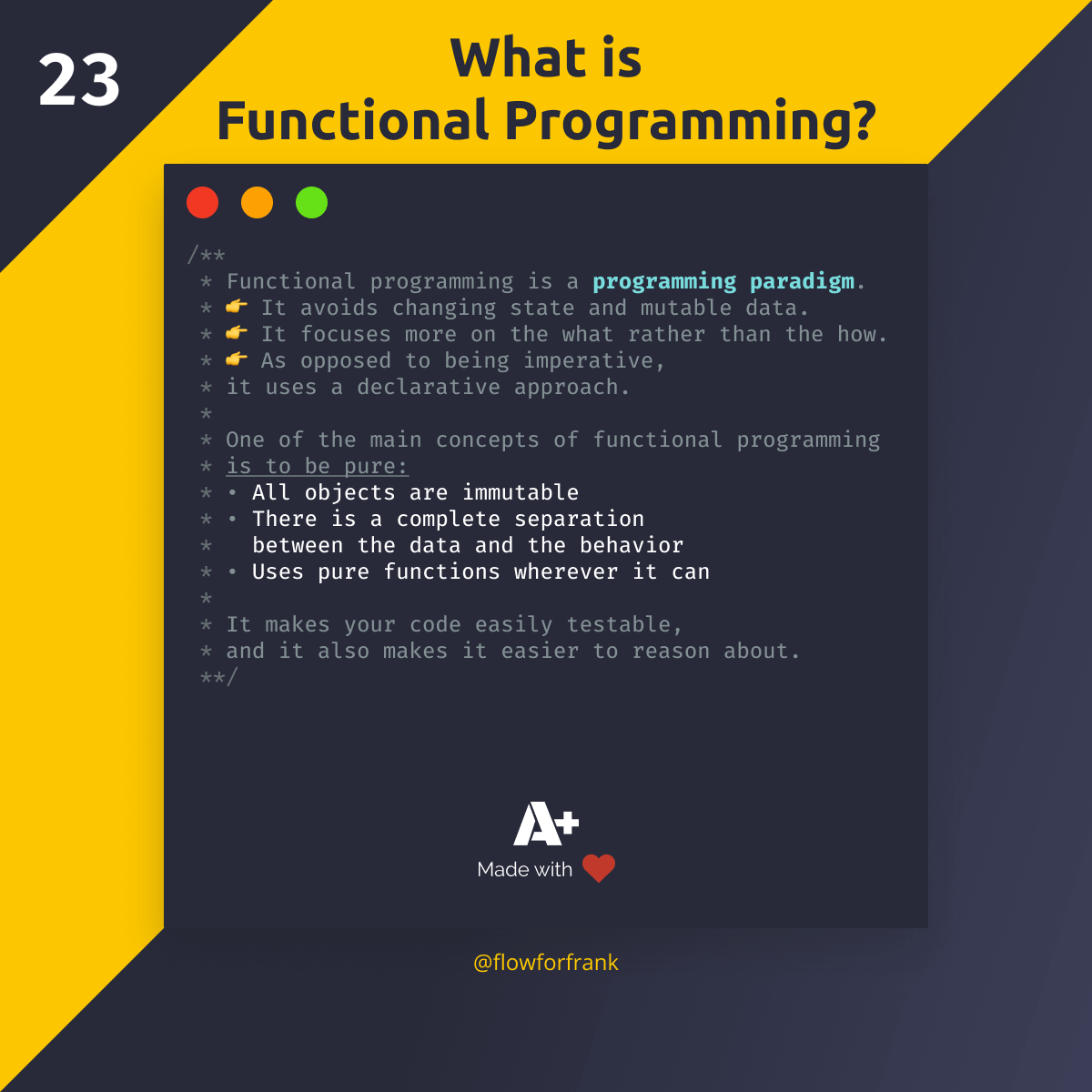

Julia does have MLStyle.jl and Lazy.jl, so it is possible to borrow some of the elements of functional programming when you want to. He details a particular example (infinite quadtrees) which illustrates the advantages of algebraic data types and laziness quite convincingly, IMO. My favorite explanation of this point is this Quora answer by Tikhon Jelvis. Problems involving tree-like data structures are often especially amenable to this style for example, Pandoc is written in Haskell. They typically use recursion and pattern matching in place of loops and conditionals.

Your point about tail call optimization is much closer to the mark the design patterns in the functional world tend to be very different than in Julia or Python. I’m pretty sure they aren’t going to top anyone’s list of reasons they prefer Haskell or OCaml or whatever. For what kind of problems is this better than Julia’s programming style?Īctual functional programmers may weigh in, but my sense of the consensus on linked lists is that no one really thinks they’re all that. What’s the advantage in using linked lists everywhere, rather than for special problems which require fast insertion and deletion?Īlso, a common feature of functional languages is tail call optimization, which promotes a heavily recursive programming style. DataStructures.jl, or write your own implementation. In Ocaml and Haskell, arrays are available only from the standard library not the core language, while in Julia it’s the exact opposite: you cannot use linked lists unless you use e.g. I hear people promoting these languages all the time, but I never studied them.įrom some superficial reading online, one of the many unique characteristics of these “full-fledged” functional languages is the use of linked lists as a default data structure, as opposed to arrays in Julia. Still, I’m wondering if there are good reasons for learning “full-fledged” functional languages like LISP, Ocaml, and Haskell. For example, anonymous functions (lambdas) are not limited to one line, and there is the function pipeline operator |>, which is convenient for composing functions. As far as I can see, Julia supports functional programming somewhat better than Python. Wolfram Knowledgebase Curated computable knowledge powering Wolfram|Alpha.I picked up some Julia fairly recently. Wolfram Universal Deployment System Instant deployment across cloud, desktop, mobile, and more.

Wolfram Data Framework Semantic framework for real-world data.


 0 kommentar(er)
0 kommentar(er)
